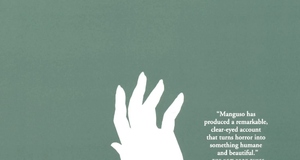The Modern Memoir: Popular Confession and How it Sells 'A Million Little Pieces'
By
2014, Vol. 6 No. 11 | pg. 4/4 | « By linking memory and these powerful emotions and presenting it with these writers, Olney reveals the emotional force that is memory and why writers often turn back to look at the past. Most people have a soft spot for some sort of nostalgia; people attach memories to their past even if that past has nothing to do with those memories. In memoir this appeal to memory is important. The past can trigger intense emotion and the writer uses this association between memory and emotion to make the writing more enjoyable and more credible. The strong emotions attached to the past make the past more believable because emotions are so palpable. The palpable emotion makes the memoir more readable. Once again it is the echo. The strong emotions that a writer experiences and then relates in memoir become the emotions of the entire world. The way this palpability of emotion in memoir works is through empathy. One thing that helps create the extreme emotional connection to memoir that people experience can be found illustrated in Svennson and Randall’s definition of autobiography in their article, “Autobiography.” Svensson and Randall say that autobiography “represents a route to what it means and feels like tobe[another] person, on the inside” (Svensson & Randall, 2003). Basically, in this definition, autobiography gives people a route to empathy. Readers “feel” what is to be someone else. They put themselves in the writer’s shoes and experience their feelings. Empathy is not easy, especially if the reader is experiencing the extreme emotions of a traumatic experience. In this definition of autobiography we see empathy as a definition.In Autobiography, a book by Linda Anderson, Anderson summarizes Karl Weintraub, saying, “for Karl Weintraub, an autobiography can only be understood if the ‘place’ the authors themselves occupy in relation to their lives can be reconstructed by the reader” (Anderson, 2000). Anderson does not simply define autobiography as empathy but notes that the success of the autobiography depends on the ability to convey empathy. To Anderson, part of memoir writing is creating empathy. The success of memoir hinges on if the reader can actually reconstruct the “place” the writer occupies. Here we see empathy as a necessity to the success of autobiography. Empathy becomes the key to autobiography. Through empathy, the reader literally experiences the emotions of the writer. In a good memoir this emotional experience can be even more important than the factual. Louis Renza claims in his article, “The Veto of the Imagination: A Theory of Autobiography,” that “[a]s we learn from instances where fiction mimics autobiography, the narrative itself formally determines and so takes precedence over the putative, factual orientation of autobiographical references” (Renza, 1977). What Renza is saying is that the story is what really determines the accepted believability of a memoir, and so, the story is more important. The story is what makes the memoir so emotionally driven. A story about something emotional basically is more important to a reader than the veracity of the story. Renza suggests, if a story is good people will listen, regardless of how true it is. It is the story that the reader becomes emotionally involved in, not simply the facts. The autobiography demands empathy not with facts but with the writer’s story. This precedence of the narrative shows the precedence of emotions in memoir. The story is the important thing in memoir because it is what provides the emotional. James Frey’s A Million Little Pieces had a profound emotional effect on its readers. The Smoking Gun reports the reaction of media mogul Oprah Winfrey, and her staff, to Frey’s book: “in emotional filmed testimonials, employees of Winfrey's Harpo Productions lauded the book as revelatory, with some choking back tears. When the camera then returned to a damp-eyed Winfrey, she said, ‘I'm crying 'cause these are all my Harpo family so, and we all loved the book so much’ (A Million Little Lies, 2006). Oprah was emotionally overwhelmed by this book to the point of getting emotional because her staff got emotional. Oprah’s emotion then sold millions of copies of Frey’s book. Frey’s emotions in the book became Oprah’s emotions and Oprah’s emotions are the emotions of millions of women in the U.S. She is a cultural dynamo whose opinion can elicit a hefty response from her viewing public. Such was the case with Frey’s book. In their follow up to “A Million Little Lies,” “A Thousand Little Refunds,” The Smoking Gun reports that “while [the 1,345] disgruntled readers [demanding refunds] can expect small refund checks (the paperback retailed for $14.95), lawyers representing the class members are seeking $788,333.33 in legal fees” (A Thousand Little Refunds, 2007). One thousand readers seeking refunds and legal fees totaling almost eight hundred thousand dollars, is the result of Frey’s lies. These readers responded to Frey by demanding a small refund that cost close to a million dollars. That is an immense response. Frey upset a thousand people who were willing to sue him and his publisher at an incredibly high cost. That is certainly outrage, outrage that could be caused by high emotional investment in the book that turned out to be fictitious. If there was such a high emotional response to Frey, why were not there more refunds demanded? The answer to that is simple; many readers were already aware that Frey was not going to be completely honest in his text. In his book, Telling Lies in Modern American Autobiography, Timothy Dow Adams says that “[a]s fundamental as truth is to autobiography, modern readers have increasingly come to realize that telling the truth about oneself on paper is virtually impossible. Even if writers could isolate ‘the truth’ of their past, how could they know it would remain true as they wrote, much less in the future?” (Adams, 1990). Adams says that the modern reader is aware that the truth that gets put into a memoir or autobiography is not necessarily the truth, but the interpretation of what the writer remembers as the truth. This awareness would explain why the outrage to Frey’s lies was not as widespread as they would be expected to be. If readers were already aware of the possible fabrication of events, their anger would have been substantially lessened. There are many reasons why memoir has become so relevant in American culture and one of those reasons is that there are powerful emotions often associated with them. These emotions are triggered through the transcendent personal quality of memoir, the desire for confession, and the motivation and attachment that readers can get from the memoir. The transcendent quality of the personal becoming communal, in other words, the relatable, is an important part of memoir in that it gives the reader a window on humanity and themselves. The desire for confession, psychologically and as a means of welcoming others into the fold, is another incredibly important and drawing aspect of memoir in both its unburdening and “evangelizing.” The motivation and emotional attachment that memoir can create is also incredibly important in that memoirs can be incredibly transformative, inspiring people and also manipulating the past to create emotion. James Frey exploited these aspects of memoir in order to make his fiction more appealing and, in doing so, showed the power of these aspects in memoir. It is important for any reader to understand why they decide to read, why they take their time to buy and then read a book. When a reader takes personal meaning from a book, it is especially important. Where the memoir has become a relevant and potent form, the reader must be incredibly careful. A good writer will use these emotions as therapy for themselves and for their readers. However they can also exploit these powerful associations, as Frey did in A Million Little Pieces. ReferencesAdams, Timothy Dow. (1990). Telling Lies in Modern American Autobiography. Chapel Hill: The University of North Carolina Press. Anderson, Linda. (2000). Autobiography. New York: Routledge. Berggren, E. G. A. (1975). The Psychology of Confession. Leiden: Brill. Frey, James. (2003). A Million Little Pieces. New York: N.A. Talese/Doubleday. Gilmore, Leigh. (2001). The Limits of Autobiography: Trauma and Testimony. Ithaca: Cornell University Press. Gilmour, P.,Dr.of Ministry. (1997). The Wisdom of Memoir: Reading and Writing Life's Sacred Texts. Winona, Minn: Saint Mary's Press. Kitromilides, P. M. (2010). Autobiography as political theory*. Il Pensiero Politico, 43, 81-86. A Million Little Lies. (2006). The Smoking Gun. Retrieved from: http://www.thesmokinggun.com/documents/celebrity/million-little-lies. Olney, James (1998). Memory and Narrative: The Weave of Life-Writing. Chicago: University of Chicago Press. Renza, Louis A. (1977). The Veto of the Imagination: A Theory of Autobiography. New Literary History, Vol. 4, No. 1, The Language of Literature. The Johns Hopkins University Press. Shumaker, Wayne. (1954). English Autobiography: Its Emergence, Materials, and Form. California: University of California Press. Smith, Sidonie, & Watson, Julia. (2010). Reading Autobiography: A Guide for Interpreting Life Narratives. Minneapolis: University of Minnesota Press. Svensson, T., & Randall, W. (2003). Autobiography. In R. Fernández-Ballesteros (Ed.),Encyclopedia of Psychological Assessment.(pp. 121-124). London: SAGE Publications Ltd. A Thousand Little Refunds. (2007). The Smoking Gun. Retrieved from: http://www.thesmokinggun.com/documents/crime/thousand-little-refunds. Morrison, Toni. (1987). The Site of Memory. In William Zinsser. (1998). Inventing the Truth: The Art and Craft of Memoir. Boston and New York: Houghton Mifflin Company. Suggested Reading from Inquiries Journal
Inquiries Journal provides undergraduate and graduate students around the world a platform for the wide dissemination of academic work over a range of core disciplines. Representing the work of students from hundreds of institutions around the globe, Inquiries Journal's large database of academic articles is completely free. Learn more | Blog | Submit Latest in Literature |


















